Ever since time immemorial, there’s a debate between two factions of the society. One faction is of conservatives who believe that any change is harmful to the world. The other faction is that of the liberals, who want to try new experimental things and are very receptive change. In the case of GMO, these two factions are facing off again. The result of this conflict, which is still raging, would ultimately decide the future of genetically modified food and thus the future of our modern agriculture.
What is the future of genetically modified food?
The raging debate to accept or reject GMO food continues. Before drawing a conclusion to it, let us have a look at the global food consumption. The world today consumes 11 billion pounds of food every day. Scientists suggest that this demand will grow by 70% by 2030.
We can produce more food by destroying more forest areas. This would create fresh agriculture pastures which would be using more chemical fertilizers and pesticides. But that would contribute only to the prevailing environment damage and not solve the looming food crisis.
GMO foods are not new to mankind:
 Human beings have been genetically modifying plants and animals since thousands of years. They began it by cultivating the dominant good traits that went on in creating newer modified generations. But the genetic modification carried on in laboratories enables choosing the healthier traits to create a new generation of plants/animals.
Human beings have been genetically modifying plants and animals since thousands of years. They began it by cultivating the dominant good traits that went on in creating newer modified generations. But the genetic modification carried on in laboratories enables choosing the healthier traits to create a new generation of plants/animals.
How beneficial or dangerous are GMO foods?
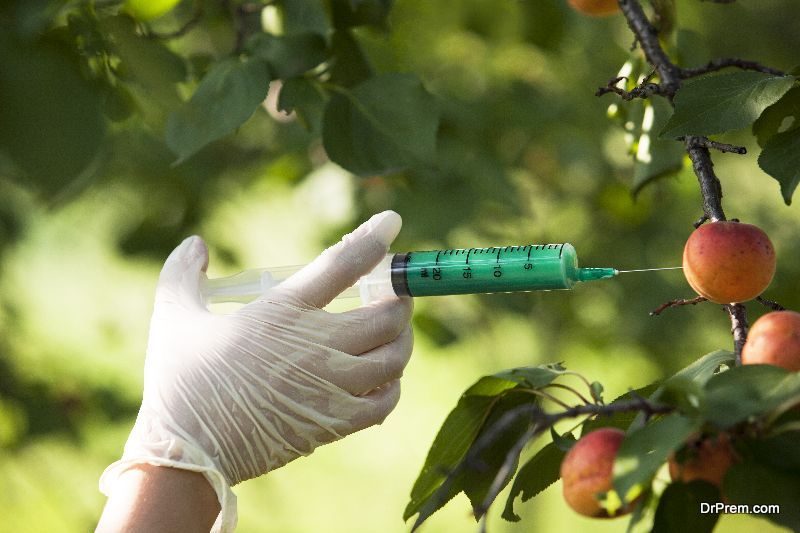 Let us take the examples of cultivation of eggplant in Bangladesh and papaya in Hawaii. Both these crops were on the verge of collapse due to a massive attack by pests. The introduction of GMO varieties not only saved the crops but also helped in protecting the environment. Through much less use of pesticides, there was a significant improvement in the profit margin of the farmers.
Let us take the examples of cultivation of eggplant in Bangladesh and papaya in Hawaii. Both these crops were on the verge of collapse due to a massive attack by pests. The introduction of GMO varieties not only saved the crops but also helped in protecting the environment. Through much less use of pesticides, there was a significant improvement in the profit margin of the farmers.
In a debate session carried out between the Executive VP of Monsanto, the oldest and largest GMO seed company and the GMO skeptics, the audience poll went largely in favor of GMO food. GMO technology is in the market since last 20 years, till date no adverse issues are reported. The following facts in favor and against GMO were brought to light:
Beneficial aspects:
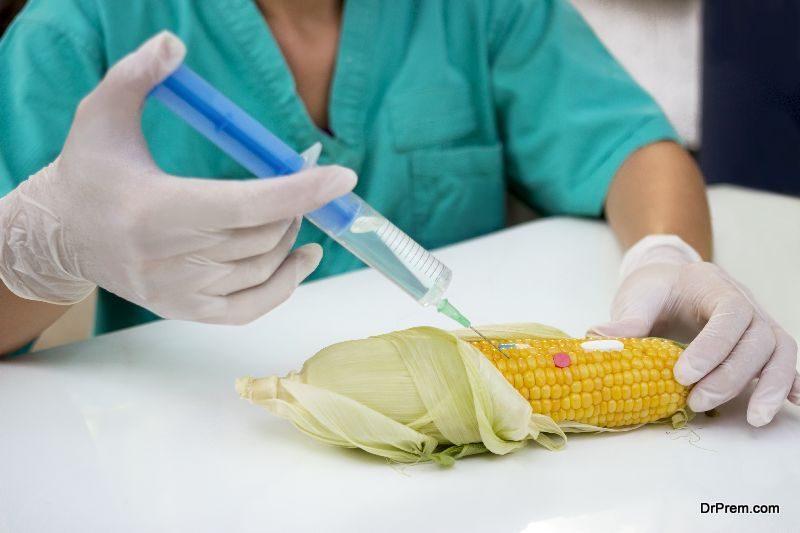
- Around 18 million farmers as using GMOs as they are herbicide tolerant. GMOS increase the yield and help preserving the farmland.
- Checks soil erosion.
- Reduces greenhouse gas emission.
- Reduced the pesticide use by 37% and upped the farmers’ profits by 68%.
- GM technology would lead to increased harvest.
- GMO foods would last longer offering a potential solution for food security and food crisis.
Possible dangers:
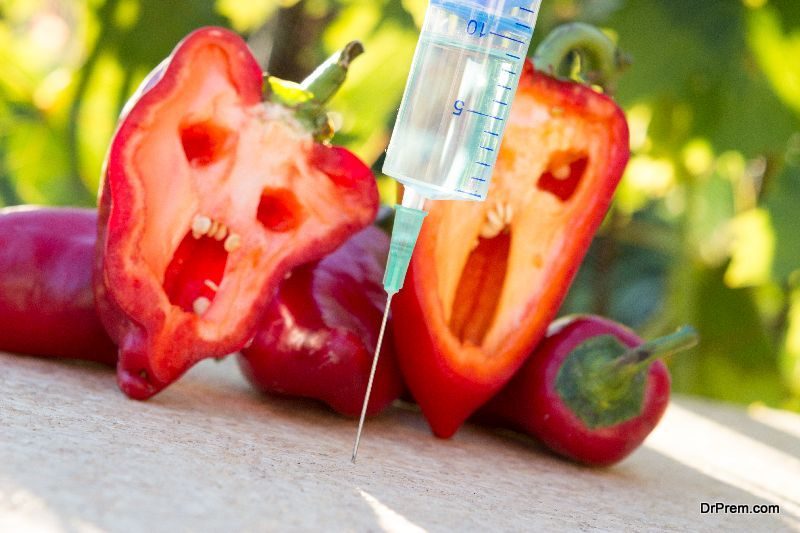
- With GMO foods, there is always a potential of future health problems as gene-silencing may not be without any side-effects.
- With more GMO plants being grown, there would be need for more herbicides.
- GMO foods with BT proteins may produce adverse health effects in the long run. Even though research says that what is toxic for insects and pests may not be toxic for human beings.
- An increased growth of herbicide-tolerant crops can be dangerous.
Do we need GMO?
 Genetic engineering in crop breeding should be urgently pressed in service to meet global food challenges. These challenges are arising due to swelling global population and climatic changes, says a study conducted by the plant geneticists of the University of Illinois, US.
Genetic engineering in crop breeding should be urgently pressed in service to meet global food challenges. These challenges are arising due to swelling global population and climatic changes, says a study conducted by the plant geneticists of the University of Illinois, US.
This escalation in production should be brought about by mid 2040 to offset severe food shortage in future. Given the short timescale, there is no way out than to implement genetic engineering and other crop breeding alternatives. The prime objective of these would be yielding better quality edible stuff.
Dr. Lee Hickey, a renowned plant geneticist involved in a world leading plant research is open to genetically modified foods. He considers genetic engineering as the key process to mitigate the future demand. He is primarily involved in conventional cross-breeding techniques supported by sophisticated genome editing and high-end laboratory process.
What is ahead of GMO food?
 The future of GMO rests mainly on two prime factors – the speedy growth of global population and limited food reserve. In this scenario, GMO seems to be the most viable option.
The future of GMO rests mainly on two prime factors – the speedy growth of global population and limited food reserve. In this scenario, GMO seems to be the most viable option.
GMO food production leapfrogged with the recent introduction of Genetically Modified salmon to the Canadian market. Genetically modified salmon takes roughly half the time to grow to its market size and requires less feed too.
This is beneficial both from the business and environment perspective. Research is on to produce bird-flu resistant chickens, disease resistant pigs, hornless dairy cows and highly productive sheep.
Since last few years, there has been a rapid expansion of GM crops with stacked traits showing improved resistance to herbicides and pesticides. Considering the need for enhanced production and environment safety, GMO is quite likely heading towards this.
Trials of new disease-resistant variations of banana, wheat, potatoes and drought tolerant sugarcane and maize are conducted all over the world. Apart from considering the bumper production with GMO, efforts are also on to reduce crop loss. In developing nations, the self-nitrogen fixing variety of cereals may be the real game changer.
Genome editing to gain more importance in future:
 An increased application of genome editing tools lies ahead in which new genes can be introduced in a plant or animal. These give quicker results and are cheaper than the old procedures of genetic modification.
An increased application of genome editing tools lies ahead in which new genes can be introduced in a plant or animal. These give quicker results and are cheaper than the old procedures of genetic modification.
Genome editing is being applied in creating disease resistance rice, wheat and maize. Scientists are working on producing disease-resistant citrus trees and wine grapes and early yielding tomatoes with the ability to withstand future climatic adversities.
Whether it is GMO or non-GMO food, ultimately better crop management and sustainable agriculture would gain precedence over others.
Genetically Modified Plants to breakdown toxin
In all aspects, plants have proved to be man’s best friend. Incidentally, scientists have engineered plants genetically to clean up the pollutants and toxic chemicals of the environment as reported by US and British reporters.
Research scientists from the University of Washington have developed transgenic poplar trees in the laboratory conditions by introducing a gene that enables the tree to suck up from soil, most of the toxin trichloroethylene, a major ground water pollutant in the US.
Phytoremediation
 The concept falls under the broad category of phytoremediation. ‘Phytoremediation uses the plant’s natural ability to extract chemicals from water, soil, and air,” Sharon Doty, an assistant professor of forest resources at the University of Washington said. However, she also added that, phytoremediation is often being viewed as too slow for practical use and that, transgenics for phytoremediation would circumvent this problem.
The concept falls under the broad category of phytoremediation. ‘Phytoremediation uses the plant’s natural ability to extract chemicals from water, soil, and air,” Sharon Doty, an assistant professor of forest resources at the University of Washington said. However, she also added that, phytoremediation is often being viewed as too slow for practical use and that, transgenics for phytoremediation would circumvent this problem.
Dotty’s choice of poplar was due to the reason that it is fast growing, it can grow for several years without flowering, thus can be harvested before it bears seeds.
Meanwhile, Neil Bruce, Rosamond Jackson and their colleagues at the University of York have developed a transgenic with genes from microbes to detoxify a contaminant and explosive, RDX. RDX accumulated in ground water and soil is highly toxic to livestock and other organisms and does not easily breakdown.
Bacteria that can breakdown RDX
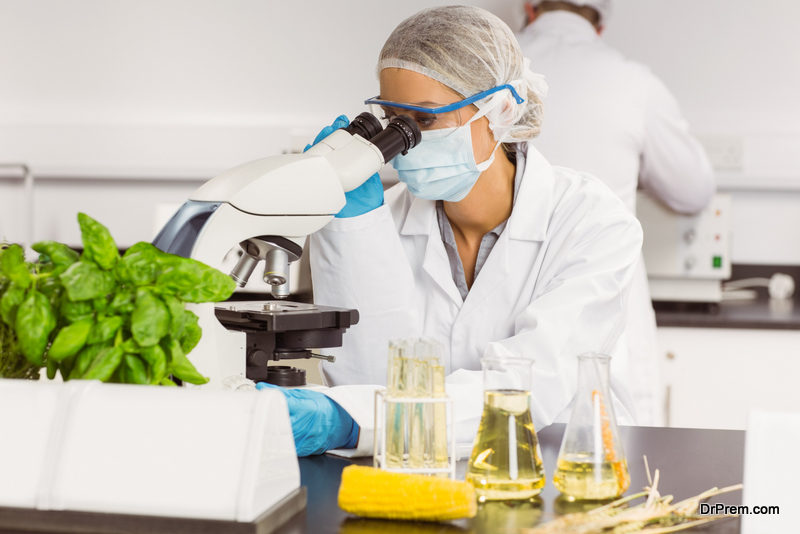 The biologists have discovered a bacteria that can breakdown RDX. They eventually isolated the bacterial gene responsible for the RDX breakdown and have cloned it into Arabidopsis thaliana, commonly called thale cress. Bruce and his colleagues found their plants cleaned up RDX significantly faster than regular plants. “The plants break down RDX to nontoxic metabolites – for example, nitrite – which the plant can use as a nitrogen source,” Bruce explained.
The biologists have discovered a bacteria that can breakdown RDX. They eventually isolated the bacterial gene responsible for the RDX breakdown and have cloned it into Arabidopsis thaliana, commonly called thale cress. Bruce and his colleagues found their plants cleaned up RDX significantly faster than regular plants. “The plants break down RDX to nontoxic metabolites – for example, nitrite – which the plant can use as a nitrogen source,” Bruce explained.
Despite these biotechnological advances, the extent of its benefits is a question because of ethical issues. With genetically engineering organisms, we are taking risk because we are oblivious of what other effects the modification may have for nature has its own ways and we may fail to predict an impending doom.
The good, the bad and the ugly: Genetically modified foods
GM foods are basically produced to increase food security and develop better quality products with more nutrients and resistance to pest and diseases. But at the same time, according to some reports, these foods can cause potential health hazards. So, before adopting them, let us weigh their pros and cons for one last time.
The good
 Plants are genetically modified for introduction of a new trait into the species. Consequently, the genetically modified plant might become resistant to pests, diseases or environmental conditions or produce a certain nutrient which it either never produced before or produced in lesser percentage.
Plants are genetically modified for introduction of a new trait into the species. Consequently, the genetically modified plant might become resistant to pests, diseases or environmental conditions or produce a certain nutrient which it either never produced before or produced in lesser percentage.
Crops that have been genetically modified tend to have a better taste and quality as they are resistant to certain pests. Their overall maturation time is reduced while yield per hectare is increased. Genetic engineering can offer increase in percentage of nutrients in a crop. Also, genetic engineering can help develop new growing techniques for better production in different environmental settings.
Genetically modified animals like pigs and chicken become more resistant to several diseases which increase their productivity. This results in better quality of meat and better yield of eggs and milk. Overall, animal health is subsequently improved.
There are certain environmental benefits such as conservation of soil and water. Food processing becomes more efficient while waste products can be managed naturally. On a large scale, the levels of food security are increased.
Can this be better?
 The advent of GM technology can spell a boon for growing populations around the world and lead to several positive changes in global food industry. The techniques used in genetic engineering can improve the overall quality of food products, enrich them with nutrients and bring industrial actors in development of agricultural sector. Nations that encounter famines, floods and droughts can use biotechnology and scientific assistance to ensure better crop yields and food security for their citizens.
The advent of GM technology can spell a boon for growing populations around the world and lead to several positive changes in global food industry. The techniques used in genetic engineering can improve the overall quality of food products, enrich them with nutrients and bring industrial actors in development of agricultural sector. Nations that encounter famines, floods and droughts can use biotechnology and scientific assistance to ensure better crop yields and food security for their citizens.
The bad
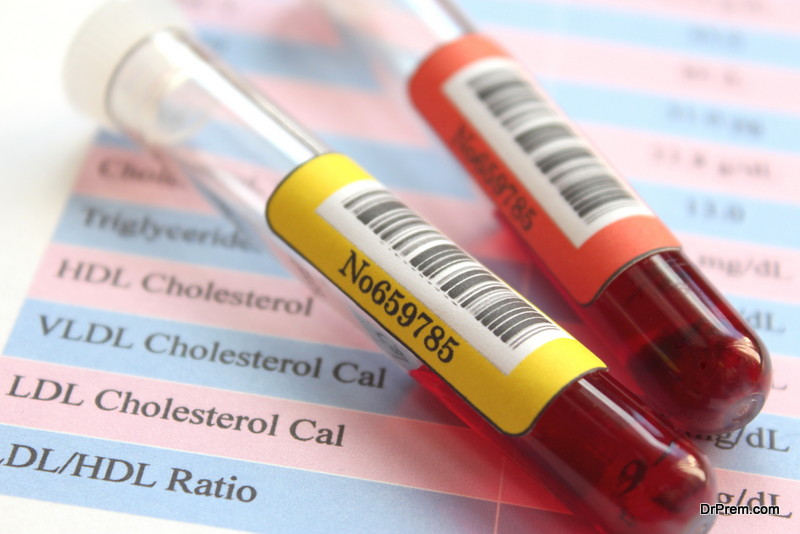 For last few years, critics have objected genetically modified on various grounds. They have expressed their concerns on ecological, economic levels along with toxicity of these food products.
For last few years, critics have objected genetically modified on various grounds. They have expressed their concerns on ecological, economic levels along with toxicity of these food products.
There is fundamental weakness in the concept of genetic modification of foods. A genetic engineer transfers genes from one organism to the other. The insertion of this gene into the DNA of target organism is more or less random. This randomness can affect the functioning of other genes; in fact, it may even disrupt the functioning of essential genes required by the target organism.
When a farmer plants genetically engineering seeds, all seeds have identical genetic arrangement. So, in case a fungus, pest or virus attacks a particular crop, then it could destroy the entire crop leading to widespread crop failure.
Latest reports also suggest that Bt toxin, which is widely used in GM crops have been found in human blood. This toxin was also detected in fetal blood, indicating that the toxin can pass on to the next generation.
Genetically modified foods can carry unknown allergens in food and cause allergies.
GM crops manufacture their own pesticides and this strategy can put more pesticides into our foods then we actually think. Overall ecology of the place can be damaged as the food chain may get disrupted due to genetic mutations.
Can this be avoided?
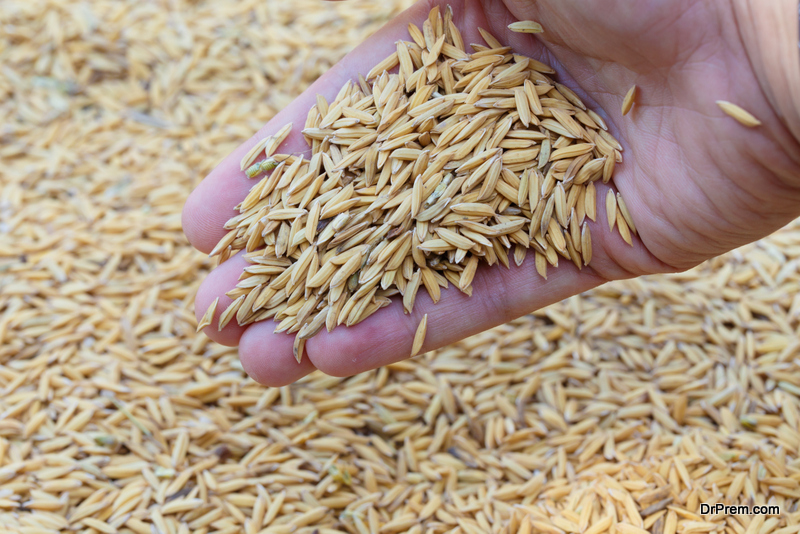 This can be avoided through several regulatory practices that a government can undertake. Genetically modified foods can be subjected to rigorous safety assessment which can reduce level of toxicity in the food product. Government can study the production locations to understand the possible ecological effects of genetic modification and take necessary actions to avoid them. Before plantation, genetically modified seeds must be studied regularly to reduce their contamination from pests, viruses and fungus. This can prevent widespread crop failure.
This can be avoided through several regulatory practices that a government can undertake. Genetically modified foods can be subjected to rigorous safety assessment which can reduce level of toxicity in the food product. Government can study the production locations to understand the possible ecological effects of genetic modification and take necessary actions to avoid them. Before plantation, genetically modified seeds must be studied regularly to reduce their contamination from pests, viruses and fungus. This can prevent widespread crop failure.
The ugly
 Over the past few years, more than 800 scientists from over 80 counties have the signed open letters to their governments, requesting a ban on patenting life-forms and indicating potential hazards of GM foods.
Over the past few years, more than 800 scientists from over 80 counties have the signed open letters to their governments, requesting a ban on patenting life-forms and indicating potential hazards of GM foods.
According to a research in 1994, 37 people have died, 1500 have been partially paralyzed due to a syndrome linked to tryptophan which is made by genetically engineered bacteria.
In the year 1996, Brazil nut genes were integrated into soybeans to increase the percentage of protein in the produce. But this resulted in development of an allergen that lead to anaphylactic shock which could have resulted in death of several patients.
Genetically modified rBGH, which is injected into dairy cows have been linked to 4 times higher risk of breast cancer, prostate cancer and human colorectal. Several GM foods are antibiotic resistant. This can make our bodies resistant to antibiotic medicines. GM foods have also been connected several viral and bacterial illness apart from birth defects and allergies.
These products may also lead to toxicity in soil as the toxins can move into the soil. There can be a stiff competition between agricultural and industrial sector, as the latter may try to come take up agricultural practices because of widespread use of scientific techniques in food production.
Why are we so critical?
 Genetically modified foods pose potential health hazards that can be life-threatening in several cases. Smoking is optional, but eating food is necessary. Therefore, one cannot compromise with quality of product and eat GM foods even after knowing their possible health effects. We criticize these foods, as the genetic engineering techniques which are incorporated in these products isn’t well-researched and therefore, it could lead to several harmful effects.
Genetically modified foods pose potential health hazards that can be life-threatening in several cases. Smoking is optional, but eating food is necessary. Therefore, one cannot compromise with quality of product and eat GM foods even after knowing their possible health effects. We criticize these foods, as the genetic engineering techniques which are incorporated in these products isn’t well-researched and therefore, it could lead to several harmful effects.
The bottomline
 GM foods are not as safe as the traditional foods and therefore, they need require better researching to become safer by all standards. GM food certainly conserve soil and water, but they can also be a threat to environment as they can threaten plant biodiversity, break food chain and cause soil degradation.
GM foods are not as safe as the traditional foods and therefore, they need require better researching to become safer by all standards. GM food certainly conserve soil and water, but they can also be a threat to environment as they can threaten plant biodiversity, break food chain and cause soil degradation.
With this, we may conclude that GM foods have certain benefits, but at the same time, they pose several hazards. In terms of crops, governments must study agricultural land and appoint scientists to study the possible after effects of genetic modification of plants and their effect on overall ecology. New genetically modified foods must be tested to rule out any allergens and toxic transfers from crops to human blood. If these regulatory procedures are followed, then the potential harmful effects of GM foods can be reduced, improving the quality of food product and increasing food security for the ever-growing population.



